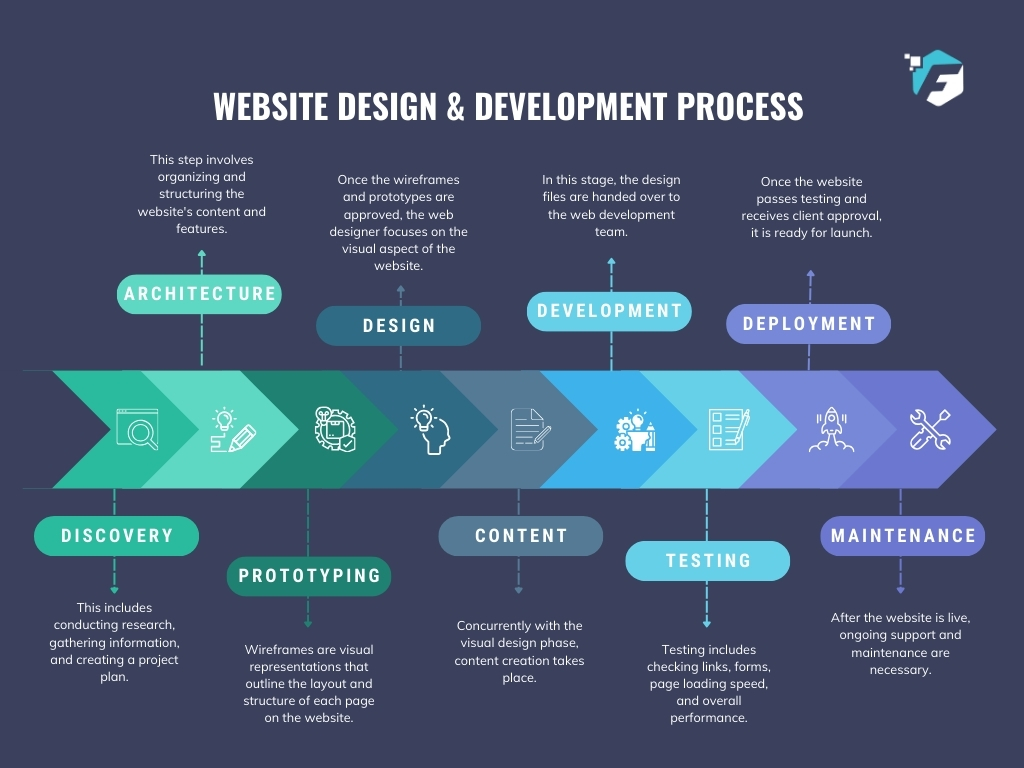
Navigating the Website Design & Development Process: A Comprehensive Overview
In today's digitally driven world, a well-designed and seamlessly functioning website is no longer a luxury but a necessity for businesses and individuals alike. Whether you're establishing an online presence for your brand or revamping an existing site, understanding the intricacies of the website design and development process is crucial for achieving your goals effectively. Let's delve into the standard steps involved in this process:
- Discovery: Before embarking on the journey of website creation, it's essential to clearly define the project's objectives, target audience, and desired outcomes. This phase involves thorough research, discussions with stakeholders, and gathering insights to lay the foundation for the project's success.
- Architecture: Building a solid architectural framework is akin to constructing the blueprint of a building. During this phase, information architecture and site mapping come into play. Defining the website's structure, navigation paths, and user flow ensures an intuitive and user-friendly experience for visitors.
- Prototyping: Prototyping serves as a preliminary model that provides a tangible representation of the website's layout, functionality, and user interface. By creating wireframes and interactive prototypes, designers and stakeholders can visualize the concept, validate design decisions, and iterate before moving forward.
- Design: With the groundwork laid out, it's time to unleash creativity and bring the website to life visually. Design elements such as color schemes, typography, imagery, and branding are meticulously crafted to align with the project's goals and resonate with the target audience. The design phase sets the tone for the overall look and feel of the website.
- Content: Compelling and relevant content is the cornerstone of any successful website. Whether it's informative articles, captivating visuals, or engaging multimedia, content creation plays a pivotal role in conveying the brand's message and capturing the audience's attention. Content strategy, creation, and optimization are integral parts of this phase.
- Development: Here's where the magic of coding and programming comes into play. Developers take the design mockups and turn them into functional web pages using various technologies and frameworks. From front-end development for user interface elements to back-end development for database integration and server-side logic, this phase brings the website to life.
- Testing: Quality assurance is paramount to delivering a flawless user experience. Testing involves thorough examination of the website for bugs, errors, and usability issues across different devices, browsers, and screen sizes. Functional testing, compatibility testing, and performance testing ensure that the website meets the highest standards of quality and reliability.
- Deployment: With the website polished and perfected, it's time to launch it into the digital realm. Deployment involves configuring servers, domain settings, and DNS records to make the website accessible to users worldwide. Careful planning and execution are essential to ensure a smooth transition from development to production environment.
- Maintenance: Launching the website is just the beginning of the journey. Ongoing maintenance and support are crucial for keeping the website secure, up-to-date, and performing optimally. Regular updates, security patches, and content management ensure that the website remains relevant, functional, and resilient in the ever-evolving digital landscape.
In conclusion, the website design and development process is a multifaceted journey that requires careful planning, collaboration, and execution at every step. By following the standard key points outlined above, you can navigate this process with confidence and create a compelling online presence that captivates your audience and achieves your objectives effectively.
